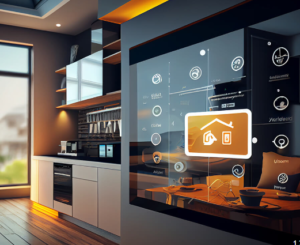
As technology continues to advance at a rapid pace, the concept of smart homes has emerged as a transformative solution to modern living. Smart homes integrate connected devices and systems that allow homeowners to manage their energy consumption more effectively, enhancing comfort while reducing utility costs and environmental impact. By utilizing the Internet of Things (IoT), smart homes are changing how we approach energy efficiency, making it easier for residents to monitor and control their energy use in real time.
Understanding Smart Homes
A smart home is equipped with devices and appliances that can communicate with each other and be controlled remotely via smartphones, tablets, or voice-activated assistants. These devices are designed to improve convenience, security, and energy efficiency, all while creating a more connected living environment. From smart thermostats to automated lighting systems, the capabilities of smart homes are vast and continually expanding.
Key Features of Smart Homes Enhancing Energy Efficiency
1. Smart Thermostats
One of the most impactful devices in the realm of energy efficiency is the smart thermostat. Unlike traditional thermostats, smart thermostats learn the homeowner’s habits and preferences over time, allowing for more precise control of heating and cooling systems.
- Energy Savings: Smart thermostats, such as the Nest Learning Thermostat and Ecobee, can adjust the temperature based on when residents are home or away, reducing energy waste. They can also be controlled remotely, allowing users to optimize their energy consumption even when they’re not home.
- Integration with HVAC Systems: These thermostats can be integrated with heating, ventilation, and air conditioning (HVAC) systems, providing insights into energy usage patterns and alerting homeowners to maintenance needs, further optimizing performance.
2. Smart Lighting Systems
Smart lighting systems offer another layer of energy efficiency by allowing homeowners to control their lighting remotely and automate it based on specific schedules or conditions.
- Automated Scheduling: Smart bulbs, such as those from Philips Hue or LIFX, can be programmed to turn on or off at specific times, ensuring that lights are only used when needed. This eliminates unnecessary energy consumption and can significantly reduce electricity bills.
- Motion Sensors: Many smart lighting systems come equipped with motion sensors that automatically turn lights on or off based on occupancy, further enhancing energy savings.
3. Energy Monitoring Systems
To truly understand energy consumption, smart homes often utilize energy monitoring systems that provide real-time data on electricity usage.
- Smart Plugs and Meters: Devices like TP-Link Kasa Smart Plugs and Sense Energy Monitors allow homeowners to track the energy consumption of individual appliances. This insight enables users to identify energy hogs and adjust usage accordingly, promoting more efficient energy habits.
- Data Analytics: Many energy monitoring systems offer data analytics that can predict energy usage trends and suggest ways to reduce consumption, empowering homeowners to make informed decisions about their energy use.
4. Smart Appliances
Smart appliances, such as refrigerators, washing machines, and dishwashers, are designed to optimize energy usage while maintaining performance.
- Efficiency Features: For example, smart refrigerators can monitor food inventory and suggest recipes based on available items, minimizing food waste. Smart washing machines can adjust water and energy usage based on load size, ensuring efficient operation.
- Remote Control: Homeowners can also control these appliances remotely, allowing them to run cycles during off-peak energy hours when rates are lower.
Benefits of Smart Homes in Energy Efficiency
1. Cost Savings
By optimizing energy consumption, smart homes lead to significant cost savings on utility bills. The ability to track and manage energy usage in real time allows homeowners to identify opportunities for savings and adjust their habits accordingly.
2. Environmental Impact
Reducing energy consumption contributes to lower greenhouse gas emissions and a smaller carbon footprint. By adopting smart home technology, homeowners can play a part in promoting environmental sustainability.
3. Enhanced Comfort
Smart homes offer improved comfort and convenience by allowing homeowners to customize their living environments. Whether it’s adjusting the temperature from the couch or setting the lights to a specific mood, smart technology enhances the overall quality of life.
Conclusion
Smart homes are revolutionizing the way we interact with our living spaces, particularly in the realm of energy efficiency. Through the integration of smart thermostats, lighting systems, energy monitoring tools, and smart appliances, homeowners can significantly reduce their energy consumption, lower utility costs, and contribute to environmental sustainability. As technology continues to evolve, the potential for smarter and more energy-efficient homes will only grow, paving the way for a more sustainable and comfortable future. By embracing smart home technology, we can transform our everyday lives while making a positive impact on the planet.
visit: gamicaltech.com